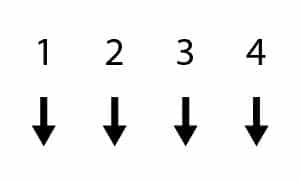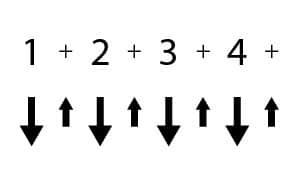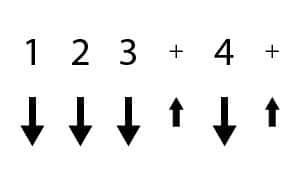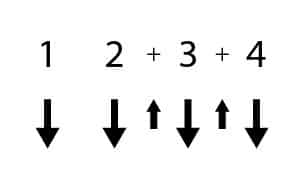
When guitarists fantasise about being famous, most of us dream about being an Angus Young style lead guitarist. But very few dream about being a solid rhythm guitarist like Malcolm Young. If you don’t want the spotlight, or you find that playing rhythm guitar is your calling, then this is the perfect lesson for you.
Strumming a few chords is easy enough. Most guitarists will master strumming along to a few chords long before they learn their first solo.
But, like with so many things in music, knowing a few simple patterns does not mean that you’ve mastered the technique. This lesson aims to teach you the theory of strumming so that you can write and play far more complex and interesting patterns.
First Things First
The first rule of playing any rhythm is to always practice with a metronome. Seriously, if that is the only thing you take away from this lesson, then you’ll already be on your way to mastering rhythm guitar.
Set your metronome to a manageable tempo (somewhere between 60 – 100 bpm), and make sure that you can hear it over your playing.
The Basics of Strumming to a Metronome
Music is divided into bars. A bar contains a set amount of notes, played to a specific beat. If you see a piece of music, and it’s got a 4/4 in the first bar, then you know that there are four beats in that bar.
4/4 is the most commonly played time signature; so much so that its called common time. For the purpose of this lesson, all patterns will be in common time.
Choose two chords and your metronome speed. Now, strum down once on each beat of the metronome, and count out loud as you play. Once you’ve counted 4-down strums on your first chord, switch to the second chord and repeat. Once you can do this perfectly in time, it’s time to move onto playing upstrokes.

Playing Upstrokes
If you only strum down, your music will start to sound dull and boring. To combat this, we add in upstrokes.
Upstrokes are counted between the downstrokes, and called “and”. So we would count 1 and 2 and 3 and 4 and. Try counting that before you strum. You will see that you still spend as much time on each chord, but you’re now adding in extra notes.
Try playing that now

Of course, this can sound dull as well. If you want your strumming to be interesting, then you should mix it up a bit. The first was we do this is by leaving out some of the upstrokes.
Keep the Rhythm Interesting
Now that you’ve mastered up strokes and down strokes, let’s move onto something a little bit more interesting. For this strumming pattern, we count 1, 2, 3 and 4 and. Down, down, down up down up.

Spend a few minutes playing this pattern before moving onto the next. It’s a simple pattern, but by leaving out the first two upstrokes, we now have something interesting and fun to play.
What happens if we change the order? Does it sound significantly different? Try playing this variation of the last strumming pattern, and see if you can hear the difference.

As you can hear, changing the order changes the feel. By ending on a downstroke, you now create a sense of tension and urgency. It’s incredible how small changes can have significant results.
Don't Play Every Note
Just like with art, in music we need to make use of empty space. To do this, we can leave out some notes. Look at this strumming pattern:

In this pattern, we don’t play the 3. Will still count it, but we don’t strum when we do. So we play down, down up, (count three but don’t play it) up, down up. 1, 2 and, and, four and.
Make it your Own
The easiest way to create your own strumming pattern is to write down all the notes (1 + 2 + 3 + 4 + ). Then, take a marker and scratch out the notes you want to leave out.
Don’t put too much thought into it; randomly select a few notes to leave out, then practice playing your new pattern. Some patterns might be tricky to master, and others might sound bad or out of place. But, if you work through this exercise you will be writing more complex and interesting strumming patterns in no time.








